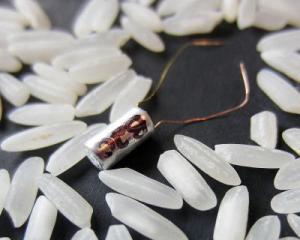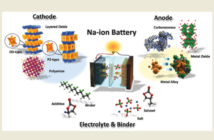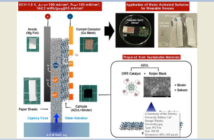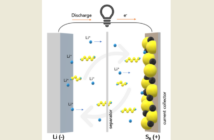Scientists have created a microbattery that holds twice the energy in comparison to current microbatteries used to monitor the movements of salmon through rivers in the Pacific Northwest and around the world.
A cylinder just slightly larger than a piece of long grain rice, the microbattery is certainly not the world’s smallest battery. Engineers have created batteries much thinner than the width of a human hair. However, those smaller batteries don’t hold enough energy to power acoustic fish tags. The new battery is small enough to be injected into an organism and holds much more energy than batteries which are smaller.
In the case of scientists who are tracking the movements of salmon, the lighter battery translates to a smaller transmitter which can be inserted into younger, smaller fish. This allows scientists to track their welfare earlier in the life cycle, usually in the small streams that are crucial to their beginnings.
The new battery can also power signals over longer distances, allowing researchers to track fish further from shore or from dams, or deeper in the water.
“The invention of this battery essentially revolutionizes the biotelemetry world and opens up the study of earlier life stages of salmon in ways that have not been possible before,” said M. Brad Eppard, a fisheries biologist with the Portland District of the U.S. Army Corps of Engineers.
“For years the chief limiting factor to creating a smaller transmitter has been the battery size. That hurdle has now been overcome,” added Eppard, who manages the Portland District’s fisheries research program.
The information from tags is used to chart the welfare of endangered fish, by the Corps and other agencies, and to help determine the optimal manner to operate dams. Three years ago the Corps turned to Z. Daniel Deng, a PNNL engineer, to create a smaller transmitter, one small enough to be injected, instead of surgically implanted, into fish. Injection is much less invasive and stressful for the fish, and it’s a faster and less costly process.
“This was a major challenge which really consumed us these last three years,” said Deng. “There’s nothing like this available commercially, that can be injected. Either the batteries are too big, or they don’t last long enough to be useful. That’s why we had to design our own.”
Deng turned to materials science expert Jie Xiao to create the new battery design.
To pack more energy into a small area, Xiao’s team improved upon the “jellyroll” technique commonly used to make larger household cylindrical batteries. Xiao’s team laid down layers of the battery materials one on top of the other in a process known as lamination, then rolled them up together, similar to how a jellyroll is created. The layers include a separating material sandwiched by a cathode made of carbon fluoride and an anode made of lithium.
The technique allowed her team to increase the area of the electrodes without increasing their thickness or the overall size of the battery. The increased area addresses one of the chief problems when making such a small battery, keeping the impedance, which is a lot like resistance, from getting too high.
High impedance occurs when so many electrons are packed into a small place that they don’t flow easily or quickly along the routes required in a battery, instead getting in each other’s way. The smaller the battery, the bigger the problem.
Using the jellyroll technique allowed Xiao’s team to create a larger area for the electrons to interact, reducing impedance so much that the capacity of the material is about double that of traditional microbatteries used in acoustic fish tags.
“It’s a bit like flattening wads of Play-Doh, one layer at a time, and then rolling them up together, like a jelly roll,” says Xiao. “This allows you to pack more of your active materials into a small space without increasing the resistance.”
At UPS Battery Center, our goal isn’t to only sell batteries, we want to inform and teach you about the amazing world of batteries, electricity and energy. Please check back for more interesting, helpful and informative articles about batteries and electricity.
Related Articles:
How To Make A Simple Generator
California is the Planned Site for World’s Largest Battery
Developing a Longer Life Smartphone Battery
Recycling Batteries: Harvesting Chemicals From A Used Battery




